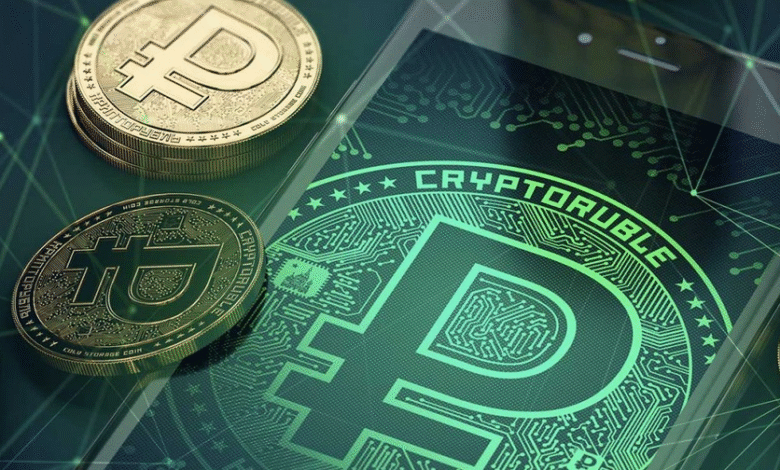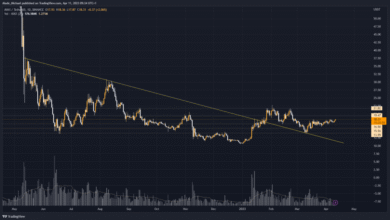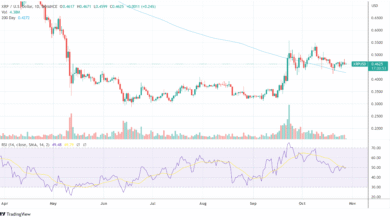Digital Ruble: Russia’s New Currency for 2024

The digital ruble is set to revolutionize the financial landscape of Russia as the central bank gears up for a significant testing phase starting April 1. This initiative marks a crucial step in the nation’s journey toward embracing a digital currency, often referred to as a Central Bank Digital Currency (CBDC). With the involvement of thirteen banks for peer-to-peer transactions, the digital ruble aims to enhance the efficiency of financial services amidst global sanctions. As recent Russia economic news highlights, this digital currency introduction is not just a response to international pressures but also a modernization effort in the financial sector. The anticipation surrounding the digital ruble underscores the increasing relevance of cryptocurrency in Russia and the potential it holds for economic resilience.
The emergence of a national digital currency, often termed as the Central Bank Digital Currency (CBDC), is gaining momentum in Russia as authorities prepare for extensive testing. The upcoming digital ruble aims to facilitate seamless transactions between individuals, reflecting a broader initiative to modernize the country’s monetary system. With a focus on technological advancements, this venture is akin to creating a secure, state-backed alternative to existing cryptocurrencies circulating in the market. As financial institutions align to support this innovative project, the impact on the overall economy remains to be seen, highlighting the importance of timely updates in Russia economic news. The push for a digital payment system symbolizes not just adaptation but also a strategic response to external economic pressures.
The Rise of the Digital Ruble: A New Era in Russia’s Monetary Policy
As Russia navigates the complexities of its current economic landscape, the emergence of the digital ruble symbolizes a significant shift in its monetary policy. The introduction of this Central Bank Digital Currency (CBDC) will not only modernize Russia’s financial infrastructure but also aim to provide a robust alternative to traditional banking methods. Given the surge in global digital currency usage, the digital ruble sets the stage for peer-to-peer transactions, directly addressing consumer demands for more secure and efficient payment systems.
The digital ruble’s testing phase, starting on April 1, positions Russia at the forefront of CBDC innovation. By engaging thirteen key banks in its functionality tests, the central bank is ensuring a rigorous evaluation process that aligns with international standards. This collaborative approach not only enhances the operational readiness of the digital ruble but also cultivates trust among potential users. With modern banking increasingly shifting towards digital solutions, the digital ruble aims to play a crucial role in Russia’s economic recovery and adaptation strategies in the face of sanctions.
Implications of CBDC Testing for Russia’s Economy
The active testing of the digital ruble reflects Russia’s broader strategy to alleviate the impact of international sanctions through technological advancements in finance. As the central bank engages with selected customers and banks, this initiative promises to uncover valuable insights into user experience and transactional efficiency. The key goal of this testing phase is not only to refine the digital ruble’s technical aspects but also to gauge public reception and readiness for a nationwide rollout by 2024. As these tests progress, they serve as a crucial touchpoint for adapting to the ever-evolving landscape of digital finance.
Moreover, the implications of successfully launching the digital ruble extend beyond mere financial convenience. By adopting this new form of currency, Russia could strengthen its sovereignty over its monetary policy in a time when foreign currency transactions are fraught with challenges. The advantages of implementing a domestic CBDC will also lay the groundwork for the integration of cryptocurrencies, as Russia’s government has begun exploring avenues for cross-border crypto payments. This strategic pivot not only highlights Russia’s commitment to maintaining economic fluidity but also signals its long-term vision for financial independence in a digitally-driven world.
The Future of Digital Currency in Russia: Beyond 2024
Looking ahead, the journey of the digital ruble is set to unfold new dimensions for Russia’s economy and its financial landscape. The anticipated nationwide introduction of the digital currency by 2024 is poised to alter how citizens interact with money and financial systems. Expectations of integrating features such as offline transaction capabilities by 2025 emphasize the proactive approach of the central bank to meet the evolving needs of consumers amid uncertainties.
As the digital ruble evolves, its potential implications for cryptocurrency adoption in Russia open up exciting possibilities. With a focus on developing secure payment systems, the government is likely to explore regulatory frameworks that could facilitate the coexistence of CBDCs and cryptocurrencies. This dual approach may enhance user confidence in digital currencies while ultimately leading to a more diversified and resilient economic environment. As Russia embraces this digital currency initiative, it embodies the country’s resolve to thrive in a rapidly transforming global economy.
Navigating International Landscape of CBDCs
In the context of global finance, Russia’s efforts to develop the digital ruble reflect a broader trend where countries are increasingly investing in CBDCs. As many nations explore the functionality and integration of their digital currencies into existing economic frameworks, international collaboration and competition will play crucial roles. Thus, the digital ruble is not merely a national endeavor; its implications could ripple across global markets, influencing international trade relations.
As CBDCs continue to gain traction worldwide, Russia’s digital ruble may redefine the parameters of international economic interactions. By proactively addressing the unique challenges it faces—including sanctions—the digital ruble enhances the Kremlin’s ability to navigate the complexities of geopolitical dynamics. This development signals a new frontier in the digital currency landscape, raising pertinent questions about the future of digital transactions and the roles that national currencies will play in a globalized economy.
Understanding Consumer Trust in Digital Currencies
For the successful adoption of the digital ruble, fostering consumer trust remains paramount. As Russia embarks on this digital currency journey, it must address concerns related to privacy, security, and the overall user experience. Trust will be foundational for individuals opting to transition from traditional banking methods to a digital currency framework. Thus, public awareness campaigns and educational initiatives surrounding the digital ruble will be essential for easing anxieties regarding its functionality.
Additionally, transparency in the operations of the digital ruble will bolster consumer confidence significantly. Establishing robust safeguards and regulations surrounding the use of the digital ruble will be imperative for gaining public acceptance. As users become more aware of their rights and the protections afforded to them, he digital currency landscape in Russia will likely witness an increased willingness among consumers to engage with this innovative financial solution.
Sanctions and the Digital Ruble: An Economic Strategy
The driving force behind Russia’s strategic pivot to the digital ruble is undoubtedly the sanctions imposed by Western nations. As these measures have constrained Russia’s access to traditional financial channels, the development of a CBDC becomes an essential response to enhance economic resilience. The digital ruble aims to provide a stable and controlled medium of exchange that allows Russia to maintain economic interaction both domestically and internationally, circumventing many of the challenges presented by sanctions.
Furthermore, the exploration of cross-border payment solutions using the digital ruble highlights the government’s proactive approach to overcoming economic obstacles. By fostering a more adaptable financial system, Russia’s digital ruble initiative not only seeks to alleviate the immediate impacts of sanctions but also aims to lay the groundwork for a more sustainable economic future. The economic strategy of prioritizing a domestic digital currency may ultimately reshape Russia’s position in global finance amidst ongoing geopolitical tensions.
The Role of Banks in Testing the Digital Ruble
The involvement of thirteen banks in the testing of the digital ruble underscores the collaborative nature of this initiative. Central banks globally recognize that the transition to digital currencies necessitates a close partnership with financial institutions to ensure successful deployment. By selecting banks that have undergone rigorous tests, Russia’s central bank has laid a solid foundation for effective integration of the digital ruble into the existing financial system.
This partnership extends beyond mere technical testing; it showcases a deeper commitment to rebuilding trust and efficiency in financial transactions. Through collaboration with banks, the central bank is paving the way for a smooth transition to the digital ruble. As these institutions engage with customers, it is anticipated that their feedback will inform enhancements and adaptations needed for full-scale implementation, ensuring that the digital ruble meets the expectations of both financial operators and the general public.
Navigating the Challenges of Digital Currency Adoption
While the vision for the digital ruble is promising, various challenges must be addressed to ensure its successful adoption. Issues such as cybersecurity threats, technical glitches, and regulatory compliance can pose significant hurdles that must be anticipated and managed. The central bank’s proactive stance in establishing a clear roadmap for the digital ruble’s introduction indicates a willingness to embrace these challenges head-on.
Engaging in systematic testing with banking partners allows potential obstacles to be identified early, paving the way for smooth implementation. Moreover, ongoing dialogues with stakeholders, including the public, regulators, and financial experts, can help fine-tune the digital ruble while instilling confidence in its use. This holistic approach echoes the need for thorough planning and effective communication as Russia transitions into a new era of digital finance.
The Intersection of Cryptocurrencies and the Digital Ruble
As Russia introduces the digital ruble, its exploration of cryptocurrency becomes increasingly relevant. The central bank’s discussions surrounding cross-border payments using cryptocurrencies complement the digital ruble’s development. By examining the dynamic interplay between these two forms of digital currency, Russia is positioned to innovate and possibly integrate various financial mechanisms that enhance user experience and financial accessibility.
Simultaneously, the understanding that cryptocurrencies can serve as alternatives to traditional currencies facilitates a more flexible financial ecosystem. The Russian government’s interest in integrating digital rubles and cryptocurrencies into its payment systems could broaden the spectrum of acceptable transactional methods, promoting inclusivity and potentially revitalizing economic flows. As these initiatives progress, the evolution of both the digital ruble and cryptocurrency will be crucial in defining Russia’s approach to modern finance.
Frequently Asked Questions
What is the digital ruble and how does it relate to Russia’s economic news?
The digital ruble is Russia’s proposed central bank digital currency (CBDC), aimed at modernizing its economy and facilitating peer-to-peer transactions. With ongoing developments reported in Russia’s economic news, the digital ruble serves as a response to international sanctions and aims to enhance the efficiency of the national payment system.
What are the objectives of the CBDC testing for the digital ruble in Russia?
The CBDC testing for the digital ruble, initiated by the central bank on April 1, aims to evaluate peer-to-peer transaction capabilities among individuals and retail transactions. Thirteen banks are participating in this phase to ensure the digital currency operates effectively before its expected nationwide introduction by 2024.
When will the digital currency introduction occur in Russia?
The introduction of the digital currency, known as the digital ruble, is anticipated to expand to the general population by 2024. This expansion will include connections for all financial service providers and exchanges in Russia, enhancing the digital currency’s adoption.
How is Russia planning to utilize cryptocurrency alongside the digital ruble?
Alongside the introduction of the digital ruble, Russia is exploring additional cryptocurrency initiatives, including cross-border crypto payments. This effort is part of the country’s strategy to navigate economic sanctions and to provide alternative transaction methods for businesses and individuals.
What challenges does the digital ruble face related to Western sanctions on Russia?
The development of the digital ruble is significantly influenced by the challenges posed by Western sanctions following the invasion of Ukraine. The urgency behind introducing a central bank digital currency is to create an independent financial system that can operate despite external pressures, enabling smoother domestic and international transactions.
Will the digital ruble have features like offline transactions?
Yes, the digital ruble is expected to include additional features such as an offline mode by 2025. This enhancement aims to improve user experience and accessibility, further solidifying the role of the digital currency within Russia’s financial ecosystem.
What is the significance of peer-to-peer transactions in the digital ruble testing phase?
Peer-to-peer transactions are crucial in the digital ruble testing phase as they allow individuals to conduct transactions directly between each other without intermediaries. This feature is key to demonstrating the digital currency’s functionality and its potential impact on everyday financial interactions in Russia.
| Key Aspect | Details |
|---|---|
| Testing Phase Start Date | April 1, 2023 |
| Involved Parties | 13 banks that passed technical and operational tests |
| Transaction Type | Peer-to-peer transactions between individuals and retail |
| Nationwide Introduction Timeline | Expected by 2024 |
| Future Features | Offline mode expected by 2025 |
| Motivation for CBDC | To mitigate the impact of Western sanctions due to the Ukraine invasion |
Summary
The digital ruble is set to transform the financial landscape in Russia with an expected nationwide rollout by 2024. As the central bank initiates its testing phase, the digital ruble aims to facilitate peer-to-peer transactions and provide a secure, efficient payment alternative amidst increasing sanctions. The commitment to a central bank digital currency (CBDC) reflects Russia’s need for financial resilience and innovation.



